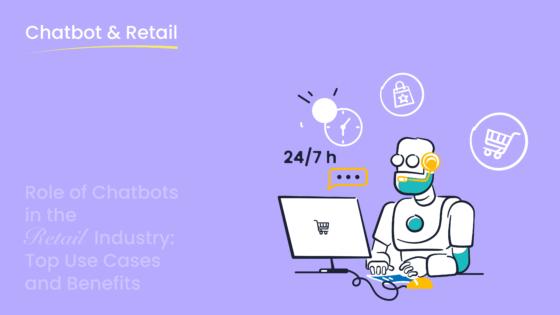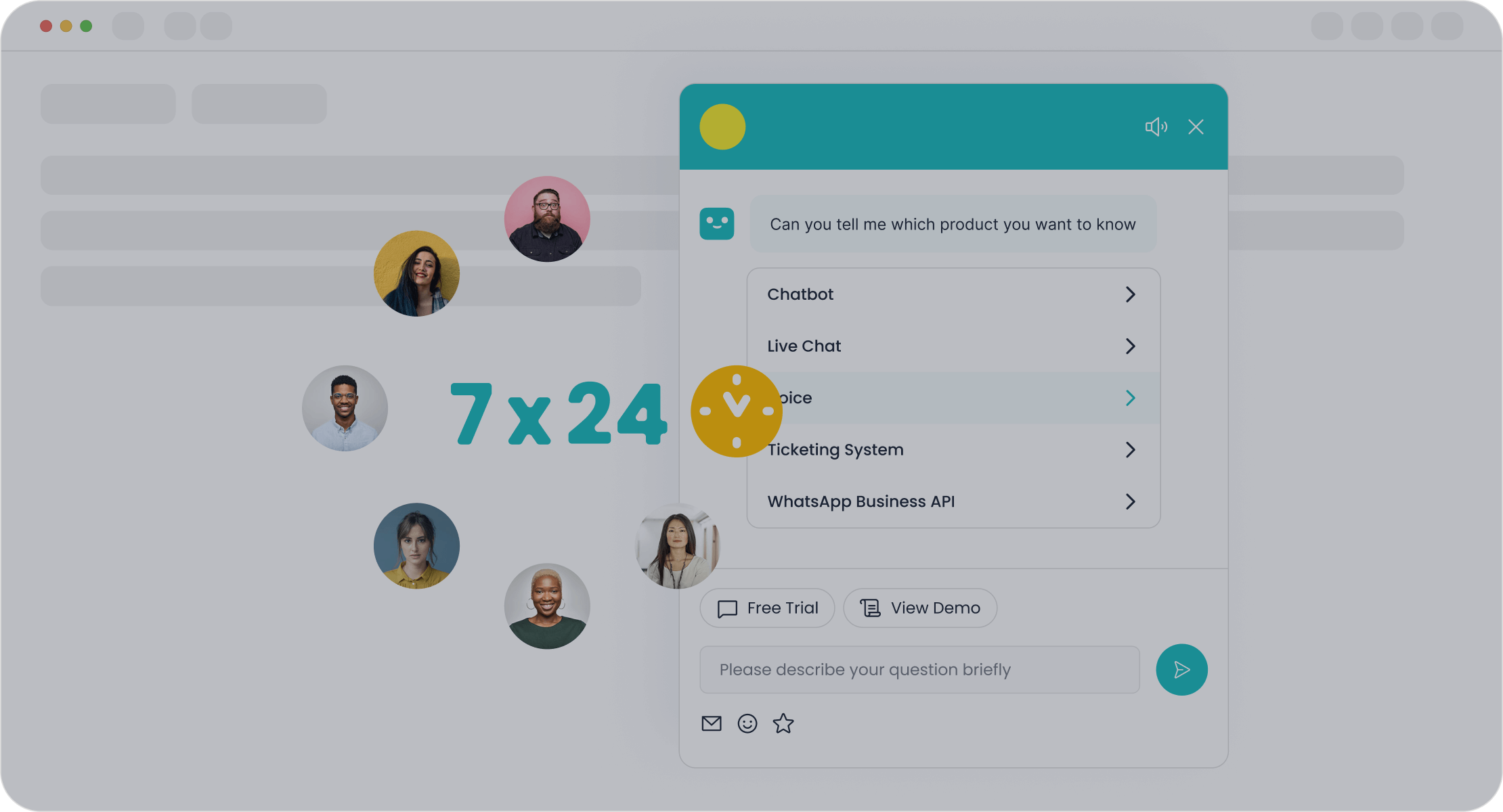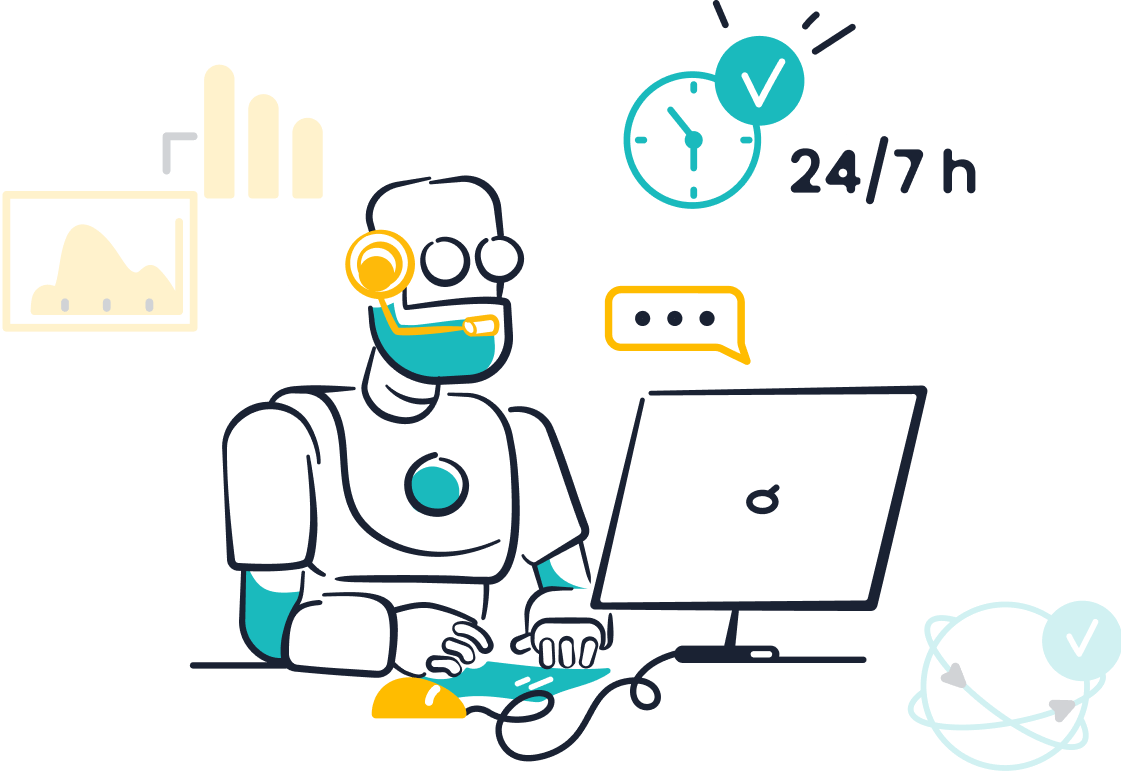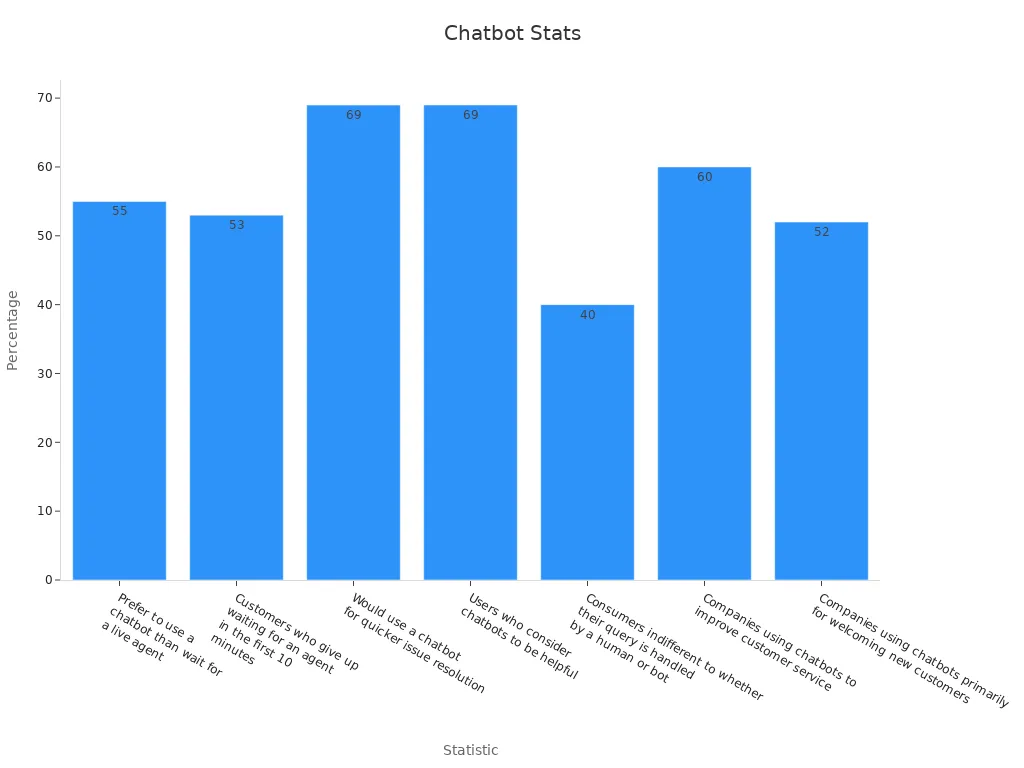Successful Ecommerce Chatbot Implementations to Learn From


Chatbots for ecommerce have revolutionized how businesses interact with customers. They’re not just tools; they’re game-changers. Did you know 80% of users have already interacted with chatbots? Plus, 73% expect websites to offer them for quick help. These AI-powered assistants handle queries 24/7, boost sales by 67%, and even cut costs by automating repetitive tasks. With solutions like Sobot, you can enhance customer satisfaction while driving growth. Learning from successful chatbot implementations can inspire you to create seamless, efficient customer experiences.
The Benefits of Chatbots for Ecommerce
Enhancing Customer Support with AI
Imagine having instant customer support available 24/7. That’s exactly what ecommerce chatbots bring to the table. They predict what your customers need, answer questions quickly, and reduce waiting times. This means happier customers and fewer complaints.
AI-powered chatbots also improve how businesses handle customer support. They optimize processes, making your team more efficient. For example, chatbots can handle repetitive tasks, like answering FAQs, so your agents can focus on complex issues.
Here’s a quick look at how AI chatbots improve customer support:
| Evidence Type | Findings | Impact on Customer Support |
|---|---|---|
| AI Chatbot Efficiency | Predicts customer intentions, reduces wait | Improves overall customer satisfaction |
| User Compliance | Increases feedback compliance | Enhances customer engagement |
| Operational Performance | Optimizes business processes | Boosts efficiency in customer service |
With these benefits, ecommerce chatbots ensure your customers always feel heard and valued.
Driving Sales and Conversions Through Automation
Chatbots for ecommerce don’t just answer questions—they drive sales. They guide customers through the checkout process, reducing confusion and cart abandonment. Plus, they suggest complementary products, encouraging customers to buy more.
Here’s how automation impacts sales and conversions:
| Benefit | Description | Impact on Engagement and Conversion Rates |
|---|---|---|
| Reducing cart abandonment | Provides immediate support during purchasing | Fewer abandoned carts |
| Guidance through checkout | Helps customers navigate the checkout process | Higher purchase completion rates |
| Upselling and cross-selling | Recommends complementary or premium products | Boosts sales and average order value |
Did you know automated SMS campaigns can increase conversion rates by 21%? And if you respond to leads within five minutes, they’re 10x more likely to convert. These stats show how automation can transform your sales strategy.
Personalizing the Customer Journey
Every customer wants to feel special, and ecommerce chatbots make that possible. They use data to understand preferences and offer tailored recommendations. This creates a shopping experience that feels personal and engaging.
Take a look at some real-world results:
| Company | Chatbot Functionality | Results |
|---|---|---|
| 1-800-Flowers | Helps consumers search and place gift orders online | 70% of customers ordering through the chatbot were new customers. |
| Amtrak | Booking rail travel through a conversational interface | Increased bookings by 25%, generating 30% more revenue, with an ROI of 800%. |
| Beauty Gifter | Customer engagement | 27X higher engagement than email, with 82% of users loving the experience. |
By personalizing the customer journey, ecommerce chatbots improve customer engagement and loyalty. They make every interaction meaningful, turning one-time buyers into repeat customers.
Reducing Costs and Improving Efficiency
Running a business can get expensive, especially when it comes to customer support. But here’s the good news: ecommerce chatbots can help you save money while boosting efficiency. These AI-powered assistants are like having a tireless team member who works 24/7 without needing breaks.
How do they cut costs? Let’s break it down:
- Automating common inquiries: Chatbots handle repetitive questions like “Where’s my order?” or “What’s your return policy?” This reduces the need for extra staff.
- Reducing staffing requirements: By managing a high volume of interactions, chatbots free up your team to focus on more complex issues.
- Empowering customers with self-service: Customers can find answers on their own, which saves time and resources.
💡 Did you know advanced AI chatbots can resolve up to 90% of product queries? That’s a huge win for efficiency and cost savings.
The numbers speak for themselves:
| Metric | Value |
|---|---|
| Average reduction in support costs | 30% |
| Improvement in response times | 60-80% faster |
| ROI timeframe | Within the first 3 months |
Ecommerce chatbots don’t just save money—they also make your operations smoother. They’re available 24/7, so customers get help anytime, without waiting. This constant availability reduces the workload on your team and improves customer satisfaction.
Imagine saving 20-30% on support costs while improving response times by up to 80%. That’s the power of an e-commerce chatbot. Plus, with fewer repetitive tasks, your team can focus on creating better customer experiences. It’s a win-win for everyone.
So, if you’re looking to cut costs and work smarter, chatbots for ecommerce are the way to go. They’re not just tools—they’re game-changers for your business.
Sephora: A Leader in Personalized Beauty Consultations

How Sephora’s Chatbot Engages Customers
Sephora’s chatbot is a shining example of how customer engagement chatbots can transform the shopping experience. It provides instant customer support, answering common questions like product availability or order tracking. This quick assistance has reduced response times by 40%, making it easier for you to get the help you need without waiting.
The chatbot also acts as a personal stylist, guiding you through product recommendations based on your preferences. Whether you’re looking for a new lipstick or skincare routine, it ensures you find the perfect match. This efficiency has boosted customer satisfaction and made Sephora one of the best examples of chatbots in the beauty industry.
Key Features and Benefits of the Virtual Artist
Sephora’s Virtual Artist takes ecommerce chatbots to the next level. Using augmented reality, it lets you try on thousands of makeup products virtually. This feature eliminates the guesswork of online shopping, helping you feel confident in your choices.
Here’s what makes the Virtual Artist stand out:
- A 35% increase in online makeup sales.
- A 25% boost in the add-to-basket rate.
- Over 20 million downloads, showing its popularity.
- Reduced return rates, thanks to better-informed purchases.
This tool doesn’t just enhance customer experience; it also integrates with Sephora’s loyalty program. By doing so, it gathers valuable data to personalize your shopping journey even further.
Lessons for Ecommerce Businesses
Sephora’s chatbot success offers valuable insights for your business. First, focus on user interaction. Engaging with customers in real time builds trust and loyalty. Second, embrace automation to handle repetitive tasks efficiently. Finally, adapt to customer needs by offering personalized solutions.
The numbers speak for themselves:
| Metric | Outcome |
|---|---|
| Increase in booking rates | 11% increase for makeover appointments |
By learning from the best examples of chatbots like Sephora’s, you can create a seamless shopping experience. Whether it’s through personalized recommendations or instant customer support, ecommerce chatbots can help you stand out in a competitive market.
Nike’s StyleBot: Redefining the Shopping Experience

AI-Driven Product Recommendations
Nike’s StyleBot is a game-changer when it comes to ecommerce chatbots. It uses AI to provide smart, tailored product recommendations that make shopping easier and more enjoyable. Whether you’re looking for running shoes or the perfect workout gear, StyleBot knows how to guide you.
Here’s what makes it so effective:
- It increased average click-through rates (CTR) by 12.5 times.
- Conversions jumped by 4 times after its implementation.
These numbers show how AI-driven recommendations can transform your shopping experience. By understanding your preferences, StyleBot ensures you find exactly what you need without wasting time.
Enhancing Customer Satisfaction Through Personalization
Personalized shopping experiences are at the heart of Nike’s chatbot strategy. StyleBot doesn’t just recommend products—it creates a journey tailored to you. From virtual try-ons to quick answers, it’s designed to make you feel valued.
Take a look at how personalization enhances customer satisfaction:
| Evidence Type | Description |
|---|---|
| Personalized Recommendations | Strengthened customer engagement and improved conversion rates. |
| Virtual Try-On Technology | Reduced size-related returns and boosted consumer confidence in online purchases. |
| AI-Powered Virtual Assistants | Streamlined customer support and provided quick solutions, fostering brand loyalty. |
This approach not only improves customer engagement but also builds trust. You feel confident in your choices, knowing the chatbot understands your needs.
Takeaways for Retailers
Nike’s StyleBot offers valuable lessons for businesses looking to implement ecommerce chatbots. Here’s what you can learn:
| Impact Type | Description |
|---|---|
| Higher Conversion Rates | Businesses using advanced conversational AI see conversion rates rise by approximately 40%. |
| Improved Customer Experience | Instant AI responses lead to reduced wait times, enhancing customer satisfaction and retention. |
| Sales Impact | AI chat can upsell and cross-sell, boosting revenue through personalized recommendations. |
By focusing on personalization and efficiency, you can create one of the best examples of chatbots in your industry. StyleBot proves that combining AI with customer-centric strategies leads to better customer support, higher sales, and stronger loyalty.
Nike’s success shows how ecommerce chatbots can redefine the way you connect with customers. Whether it’s through personalized recommendations or seamless customer support, the possibilities are endless.
Sobot Chatbot: Empowering Ecommerce Businesses

Overview of Sobot’s AI-Powered Chatbot
When it comes to ecommerce chatbots, Sobot’s AI-powered chatbot stands out as one of the best examples of chatbots in the industry. It’s designed to make your business more efficient while keeping your customers happy. This chatbot doesn’t just answer questions—it transforms how you interact with your audience.
Here’s what makes it so effective:
- It operates 24/7, ensuring your customers always get help when they need it.
- It’s multilingual, so you can connect with people in their preferred language.
- It’s easy to set up, requiring no coding skills.
Over the past two years, Sobot’s platform has achieved remarkable results. It reduced inbound discussion volume by 20%, and 85% of customer issues were resolved through the chatbot. Plus, with a 97% customer satisfaction score, it’s clear that this tool delivers real value.
How Sobot Chatbot Boosts Conversions and Efficiency
Sobot’s chatbot doesn’t just save time—it drives results. By automating repetitive tasks, it frees up your team to focus on more complex issues. This efficiency translates into better customer engagement and higher sales.
Here’s how it works:
- Proactive Assistance: The chatbot identifies customer needs in real time, offering solutions before they even ask.
- Smart Recommendations: It suggests products based on customer preferences, boosting conversions by 20%.
- Cost Savings: Operating 24/7, it reduces the need for additional staff, cutting expenses by up to 50%.
More than 80% of the answers provided by the AI are accurate, which means your customers get reliable information quickly. Positive feedback has also soared to over 96%, proving that this chatbot enhances both efficiency and satisfaction.
Real-World Success: OPPO’s Chatbot Implementation
OPPO, a global leader in smart devices, is a shining example of how Sobot’s chatbot can transform a business. During peak shopping periods, OPPO faced a surge in customer inquiries. By implementing Sobot’s chatbot, they streamlined their operations and improved service quality.
Here’s what OPPO achieved:
- An 83% chatbot resolution rate.
- A 94% positive feedback score.
- A 57% increase in repurchase rates.
The chatbot handled repetitive queries, allowing human agents to focus on complex issues. It also optimized OPPO’s knowledge base, reducing maintenance efforts by 90%. These results highlight how Sobot’s AI-powered chatbot can empower your business to deliver exceptional customer experiences.
eBay Canada: A Virtual Shopping Assistant
Features of eBay’s Facebook Messenger Chatbot
eBay Canada’s Facebook Messenger chatbot, also known as Shopbot, is a great example of how ecommerce chatbots can enhance your shopping experience. This virtual shopping assistant simplifies the buying process by offering features that make finding and purchasing items easier.
Here’s what makes Shopbot stand out:
| Feature | Contribution to Performance Metrics |
|---|---|
| Narrowing product search | Helps visitors find products more efficiently. |
| Reminders for expiring auctions | Keeps customers engaged and informed about their bids. |
| Shopbot as personal assistant | Provides personalized shopping experience, increasing user interaction. |
| Learning user preferences | Enhances user experience by tailoring suggestions based on past interactions. |
Shopbot doesn’t just stop at helping you search. It learns your preferences over time, offering tailored recommendations. Users are three times more likely to inquire about products after using this chatbot, proving its effectiveness in boosting engagement.
Impact on Customer Experience and Sales
eBay’s chatbot has transformed how you shop online. Its advanced AI technology understands your needs, providing meaningful product recommendations. This creates a natural and enjoyable shopping experience.
Here’s how it impacts customer experience and sales:
- Faster response times improve satisfaction.
- Enhanced product search assistance increases conversion rates.
- Personalized suggestions foster trust and loyalty.
"Imagine a chatbot that understands not only how you feel but also what you need... Its ability to learn from user behavior and preferences allows it to continuously evolve and improve."
By supporting your entire shopping journey, this chatbot ensures you find what you need while boosting eBay’s sales efficiency.
Insights for Ecommerce Platforms
What can you learn from eBay’s success? First, focus on personalization. Chatbots that adapt to user preferences create a better experience. Second, use AI to streamline processes like product searches and reminders. Finally, remember that ecommerce chatbots aren’t just tools—they’re your brand’s voice.
When implemented well, chatbots can deliver significant ROI. They improve customer satisfaction and drive conversions, making them one of the best examples of chatbots in the industry.
Lessons from the Best Examples of Chatbots
Understanding Customer Needs and Expectations
To create a chatbot that truly resonates with your audience, you need to understand what your customers want. Many users prefer quick solutions over waiting for a live agent. In fact, 69% of customers would rather use a chatbot for faster issue resolution. This preference highlights the importance of designing chatbots that prioritize speed and efficiency.
Take a look at these insights:
| Statistic | Percentage |
|---|---|
| Prefer to use a chatbot than wait for a live agent | 55% |
| Customers who give up waiting for an agent in the first 10 minutes | 53% |
| Would use a chatbot for quicker issue resolution | 69% |
| Users who consider chatbots to be helpful | 69% |
| Consumers indifferent to whether their query is handled by a human or bot | 40% |
| Companies using chatbots to improve customer service | 60% |
| Companies using chatbots primarily for welcoming new customers | 52% |

By understanding these expectations, you can design ecommerce chatbots that deliver faster responses, improve customer engagement, and enhance the overall customer experience.
Balancing Automation with Human Touch
Automation is powerful, but it’s not a one-size-fits-all solution. Customers still value the human touch, especially for complex issues. Successful chatbot examples show that blending automation with human interaction builds trust and improves satisfaction.
Studies reveal that trust in automated agents increases when they perform reliably. However, poor performance can erode trust and reduce usage. Here’s what research says:
| Study | Findings |
|---|---|
| Ullmann and Malle (2017) | Trust in automated agents increases with reliability, leading to more usage. Poor performance decreases trust and usage. |
| Glikson and Woolley (2020) | Trust is crucial for integrating automated agents in workplaces, impacting decision-making and processes. |
| Chugunova and Sele (2022) | While AA can reduce emotional responses, this can enhance rationality in interactions, improving performance in certain contexts. |
To strike the right balance, use automation for repetitive tasks while ensuring human agents are available for more nuanced queries. This approach creates a seamless experience that feels both efficient and personal.
Leveraging Data for Continuous Improvement
Data is your chatbot’s best friend. By analyzing metrics like response times, user engagement rates, and customer satisfaction scores, you can identify areas for improvement. Regular monitoring and A/B testing help refine chatbot performance and ensure it evolves with your customers’ needs.
Here’s how data can drive success:
- Measure conversion rates to see how well your chatbot guides users toward specific actions.
- Track metrics like conversation length, user retention, and task completion rates to evaluate effectiveness.
- Monitor trends to spot opportunities for optimization.
- Integrate customer feedback to make improvements that matter.
For example, Telepass Group achieved a 13% purchase conversion rate within six months of using their chatbot. This success came from leveraging data to fine-tune their approach.
By continuously analyzing and adapting, you can ensure your ecommerce chatbots remain effective and relevant, delivering exceptional customer experiences every time.
Choosing the Right Chatbot Platform
Choosing the right chatbot platform can feel overwhelming, but it doesn’t have to be. The key is to focus on what your business needs and how the chatbot can meet those needs. A great platform doesn’t just answer questions—it transforms how you connect with your customers.
Start by evaluating the platform’s performance. Look at metrics like conversion rates, customer satisfaction, and how well it reduces cart abandonment. These numbers tell you if the chatbot is doing its job. Here’s a quick breakdown of what to measure:
| Criteria | Description |
|---|---|
| Conversion Rates | Measure how effectively the chatbot converts interactions into sales. |
| Customer Satisfaction | Gauge how happy customers are with their interactions with the chatbot. |
| Average Order Value | Analyze the average amount spent by customers who interact with the chatbot. |
| Cart Abandonment Rates | Assess the chatbot's effectiveness in reducing the number of customers who leave without purchasing. |
| Repeat Business | Evaluate how well the chatbot encourages customers to return for future purchases. |
Next, think about the features that matter most to you. Does the chatbot integrate with your existing platforms? Can it handle your product catalog and answer detailed questions? These are must-haves for any ecommerce business. Here are some other things to consider:
- AI and machine learning capabilities.
- User-friendly design for both you and your customers.
- Scalability to grow with your business.
- Strong data security and compliance.
The best examples of chatbots don’t just work—they excel. They’re customizable, reliable, and easy to use. Platforms like Sobot, for instance, offer all-in-one solutions that combine efficiency with personalization. By choosing a platform that aligns with your goals, you’ll create a chatbot that not only supports your business but also delights your customers.
💡 Tip: Always test the chatbot before committing. A trial run can reveal how well it fits your needs and whether it delivers the results you’re looking for.
Ecommerce chatbots have proven to be game-changers for businesses, offering 24/7 support, personalized interactions, and cost-saving automation. They improve customer engagement, boost sales, and provide valuable insights into buying behavior. For instance, 75% of shoppers prefer quick responses within five minutes, making chatbots essential for enhancing the customer experience.
To replicate the success of the best examples of chatbots, start by identifying your customers’ pain points. Focus on creating a chatbot that addresses these needs efficiently. Choose a reliable platform like Sobot to ensure seamless chatbot implementation. With the global chatbot market expected to reach $1.3 billion by 2024, now is the perfect time to invest in this transformative technology.
💡 Tip: Use chatbots to analyze customer interactions and refine your strategies for continuous improvement.
FAQ
What is an ecommerce chatbot, and how does it work?
An ecommerce chatbot is an AI-powered tool that interacts with customers through text or voice. It answers questions, provides recommendations, and assists with purchases. It works by analyzing user input and responding based on pre-set rules or AI algorithms.
How can a chatbot improve my online store’s sales?
Chatbots guide customers through the buying process, recommend products, and send reminders for abandoned carts. They also provide instant support, reducing frustration. These features boost conversions and encourage repeat purchases, making them a valuable sales tool.
Do I need coding skills to set up a chatbot?
Nope! Many platforms, like Sobot, offer no-code solutions. You can use a point-and-click interface to design and deploy your chatbot. This makes it easy for anyone to set up without technical expertise.
Can a chatbot handle multiple languages?
Yes, most advanced chatbots, including Sobot’s, are multilingual. They can communicate in various languages, ensuring you connect with customers worldwide. This feature enhances accessibility and improves the overall customer experience.
How do I choose the right chatbot for my business?
Look for features like 24/7 availability, AI-driven recommendations, and easy integration with your existing systems. Platforms like Sobot offer customizable, scalable solutions that fit businesses of all sizes. Always test the chatbot to ensure it meets your needs.
💡 Tip: Focus on your customers’ pain points when selecting a chatbot. The right tool should solve their problems efficiently.
See Also
Simple Ways to Integrate Chatbots on Your Website
Enhancing Customer Satisfaction with E-commerce Chatbots
Best Live Chat Tools for E-commerce in 2024